Pearl grading
|
South sea Pearl Grading Please note , The ( AAA - A ) pearl grading system and the (A-D ) system can be interchanged , These are the most accepted systems for most pearl retail and wholesale in the world . Pearl grading system (AAAA or AAA+) – Its not an industry accepted pearl grading system. pacific pearls uses (AAA -A ) pearl Grading system . AAA Quality pearl is the highest quality pearl with excellent luster and at least 95% surface clean .
|
|||||
|
(A-D GRADING ) A |
(A - AAA) AAA |
The highest quality pearl |
Luster Very High |
Surface >95% clean |
Shape Perfect Round |
|
A/B |
AA+ |
Quality pearl |
High – Very high |
>80 %clean |
Round |
|
B |
AA |
Common quality |
High – Medium |
>70%clean |
Round |
|
C |
A+ |
Not sold at pacific pearls |
Good |
>40% clean |
Off Round to Round |
|
D |
A |
Not sold at pacific pearls |
Pool |
< 40% Clean ,Deep inclusions |
Off Round |

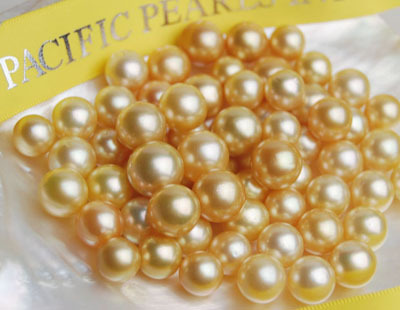
|
Tahitian Pearl Grading Please note , The ( AAA - A ) pearl grading system and the (A-D ) system can be interchanged , These are the most accepted systems for most pearl retail and wholesale in the world . Pearl grading system (AAAA or AAA+) – Its not an industry accepted pearl grading system. pacific pearls use (AAA -A ) pearl Grading system . AAA Quality pearl is the highest quality pearl with excellent luster and at least 95% surface clean ,
|
|||||
|
(A-D GRADING ) A |
(A - AAA) AAA |
The highest quality pearl |
Luster Very High |
Surface >95% clean |
Shape Perfect Round |
|
A/B |
AA+ |
Quality pearl |
High – Very high |
>80 %clean |
Round |
|
B |
AA |
Common quality |
High – Medium |
>70%clean |
Round |
|
C |
A+ |
Not sold at pacific pearls |
Good |
>40% clean |
Off Round to Round |
|
D |
A |
Not sold at pacific pearls |
Pool |
< 40% Clean ,Deep inclusions |
Off Round |
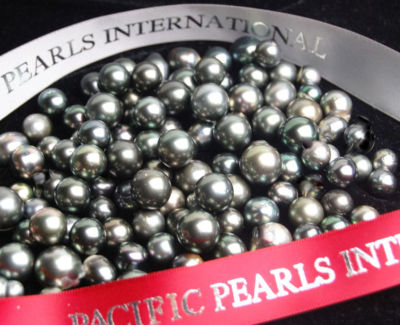
|
Akoya Pearl Grading Please note , The ( AAA - A ) pearl grading system and the (A-D ) system can be interchanged , These are the most accepted systems for most pearl retail and wholesale in the world . Pearl grading system (AAAA or AAA+) – Its not an industry accepted pearl grading system. pacific pearls use (AAA -A ) pearl Grading system . AAA Quality pearl is the highest quality pearl with excellent luster and at least 95% surface clean .
|
|||||
|
AAA |
nacre is at least 0.4 mm |
The highest quality pearl |
Luster Very High |
Surface >95% clean |
Shape Perfect Round |
|
AA+ |
Thick Nacre |
Quality pearl |
High – Very high |
>90 %clean |
Round |
|
AA |
Medium To Thick Nacre |
Common quality |
High – Medium |
>85%clean |
Round |
|
A |
Thick Nacre |
Not sold at pacific pearls |
Good |
>70% clean |
Off Round to Round |

|
Freshwater Pearl Grading Please note , The ( AAA - A ) pearl grading system and the (A-D ) system can be interchanged , These are the most accepted systems for most pearl retail and wholesale in the world . Pearl grading system (AAAA or AAA+) – Its not an industry accepted pearl grading system. pacific pearls use (AAA -A ) pearl Grading system . AAA Quality pearl is the highest quality pearl with excellent luster and at least 95% surface clean .
|
|||||
|
AAA |
Very Thick Nacre |
The highest quality pearl |
Luster Very High |
Surface >95% clean |
Shape Perfect Round |
|
AA+ |
Thick Nacre |
Quality pearl |
High – Very high |
>90 %clean |
Round |
|
AA |
Medium To Thick Nacre |
Common quality |
High – Medium |
>85%clean |
Round |
|
A |
Thin Nacre |
Not sold at pacific pearls |
Good |
>75% clean |
Off Round to Round |

The seven pearl value factors are:
Luster
Size
Shape
Color
Surface
Nacre
Matching
Value Factor 1: Luster
Luster is the most important of all the value factors to the beauty of a pearl.
Luster is more than just a surface sheen . It’s caused by light traveling down through translucent layers of nacre , and reflecting back to the eye from deep within the pearl. The effect is that of an inner glow from the heart of the gem .
There are four categories of luster:
Excellent ( Very good )- Reflections are bright, sharp , and distinct
Good – Reflections are bright but not sharp, and they are slightly hazy around the edges
Fair - Reflections are weak, hazy , and blurred
Poor - Reflections are dim and diffused
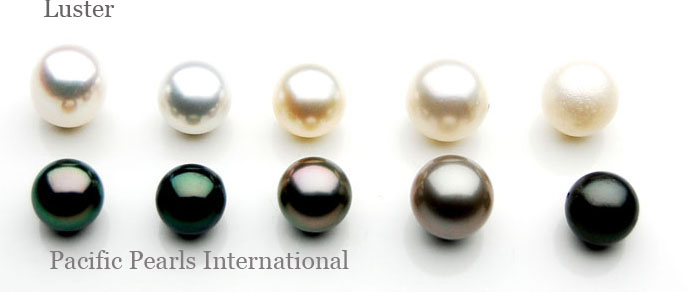
Value Factor 2: Size
Pearls can be smaller than 2 millimeter in the case of tiny seed pearls, or as large as twenty millimeters for a big south sea pearl. The larger the pearl, other factors being equal, the more valuable it will be. The average sized Akoya pearl sold today is between 7and 7.5 millimeters. In South sea pearls an 8mm pearl is small , 12-15 mm is average , and over 16mm is very large.
As with other gems , a larger pearl is typically more valuable . The larger the pearl , the more rare it tends to be , and the more it costs. But fine quality pearls can be small , and low quality pearls can be large, so a pearl’s ultimate worth depends on how it combines the complete mix of value factors.

Value Factor 3: Shape
Pearls come in many shapes. Depending on how they are formed within the mollusk. Because most people expect pearls to be round, and round pearls are very rare, they tend to be much more expensive than other shapes. Shape in pearls : Round , Near-Round , Oval , Drop, Button, Baroque, Semi-Baroque ,
Standard pearl shapes :
Round – Appears round to the eye
Near-round – Appears almost around to the eye. Some might be slightly out –of-round, elongated, or flattened .
Oval- Symmetrical , rounded oblong shape
Drop-symmetrical , rounded pearl shape. Can be a long or short drop.
Button- Symmetrical , flattened or slightly flattened circular shape. Can be a high-domed or low –domed button.
Baroque – Non – symmetrical shape with a noticeably irregular appearance .
Semi-baroque – Non-symmetrical , off-round, slightly irregular oval, button, or drop.

Value Factor 4: Color
A pearl’s color , as well as the color of any other object on earth.
Color is an important factor to consider for several reasons. Individuals have very personal preferences in terms of color based on their own skin, eye, and hair color and should select a color that is best suit to them. Color also affects cost because some are rarer than others. Cultured pearls come in a variety of colors from pink to black. While the color of a pearl is really a matter of the wearer's preference , usually rose or silver/white pearls tend to look best on fair skins while cream and gold toned pearls are flattering to darker complexions. In naturally "black" cultured pearls, the color range from light gray to dark gray, and also includes blue and green; in black pearls, a green overtone is the rarest and most costly, especially when it results in an intense "peacock" color. Cultured pearls are available in many natural colors - white, black, gold, pink, green, blue, gray ! from many parts of the world.

Pearl color can have main characteristics:
Body color- the dominant , overall color of a pearl
Overtone – One or more translucent color that appear over a pearl’s body color
Orient- Iridescent , rainbow color shimmering on or just below a pearl’s surface.

Value Factor 5: Surface
In an idea world , all pearls would be spotless. In reality , a completely clean pearl is a rare treasure . Since rarity influences value, the prices of such pearls run extremely high . Most consumers must settle for some degree of surface irregularity in the pearls they purchase . Cleanliness refers to the absence of disfiguring spots, bumps or cracks on the surface of a pearl. The cleaner the surface of the pearl, the more valuable. This refers to the pearl's freedom from such surface blemishes as small blisters, pimples, spots, or cracks. Imperfections may also appear as desk spots, small indentations welts or blisters, or surface bumps. Think of the pearl's surface as you would your own skin. Just as our own is rarely completely free of little imperfections, so it is with the pearl.
Very Clean- pearls can be blemish-free or contain minute surface characteristics that are very difficult to see when examined by a trained observer
Clean (lightly blemished) – pearls show minor surface irregularities when inspected by a trained observer
Moderately Blemished – pearls show noticeable surface characteristics
Heavily Blemished – pearls show obvious surface irregularities.

Value Factor 6: Nacre
Nacre is the very essence of the pearl itself. Its close relationship to luster makes nacre quality a crucial value factor. A pearl’s appearance helps determine its quality , and it has a lot to do with whether the nacre is thick or thin . Of course , thicker nacre doesn’t guarantee an attractive , lustrous appearance . But most of the time , pearls with thicker nacre tend to be more lustrous as well .
Nacre that’s too thin has a negative effect on a pearl’s value. Pearls that look chalky or dull , or pearls that have a visible nucleus , are unattractive. They lack the gleam that is the hallmark of this cherished aquatic gem .

Value Factor 7: Matching
No two pearls are exactly alike . Realistically , then, individual pearls in a piece of jewelry can’t be completely identical. they might actually be quite different. It takes an enormous amount of skill and labor to sort harvested pearl.

Pearl History
The allure of the pearl is timeless and universal. since the beginning of recorded history We don't know exactly when or where the pearl was discovered , but it is likely that it was long before recorded history , In the over 4,000 - year- old book , there are numerous references pointing to the importance of pearls. we are told of kings bearing gifts of pearls, and the rulers of ancient India and "Ceylon" (now known as SriLanka ) also valued the pearl .

From Queen Elizabeth I to Queen Elizabeth II , the tradition has continued through the centuries .
Elizabeth I – The queen Of Pearls ,
No one has ever loved pearls to the extent of Queen Elizabeth. She had over 3,000 gowns decorated with pearls , eighty pearl-bedecked wigs, and chests of pearl strands , rings ,earrings and pendants.
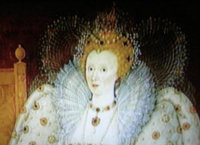
At the beginning of the twentieth century , pearls were as much a nuptial gem in the United States as diamonds are today; pearls accounted for aver 75 percent of jewelry sales in the US at the turn of the century . The pearl is the “wedding gem” today , as it has been for hundreds of years .
By the sixth century , the allure of the pearl is undiminished . According to Islamic mystics, the pearl was the first creation of God , and for Moslems the pearl is a special gift to the world from God .
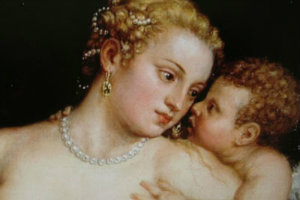
In addition to its value as a gem of incomparable beauty and allure , for many centuries leading physicians believed pearls contained special curative abilities, especially for the eyes, diseases of the blood , and melancholy or depression. pearls were believed to possess the power to enable one to see into the future , and to interpret dreams .
The illustrious history of the pearl is unparalleled . Today's birthstone for June , the pearl has a history more ancient, more fascinating , more spiritual, and more regal than other gem . Unlike diamonds and most colored gemstones , its beauty is there for all to behold from the very first moment. it needs no enhancement ;it needs no cutting . A find pearl has a depth and lustrousness that seems to actually glow from within . It is not difficult to believe that the pearl was truly the first gem - something beautiful , rare , and highly prized .
